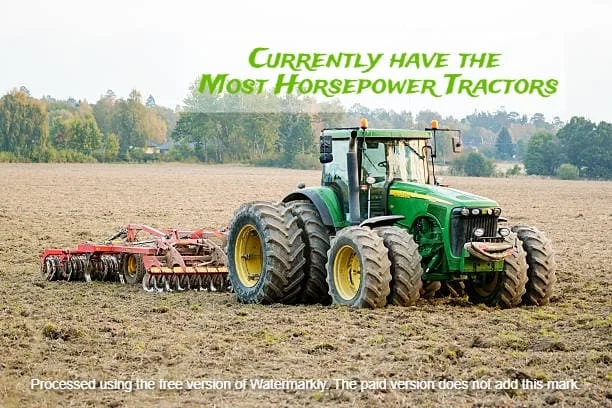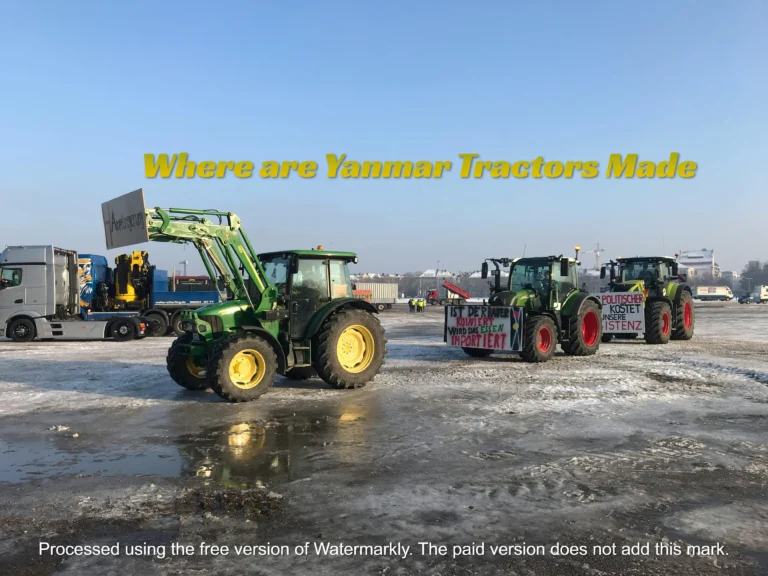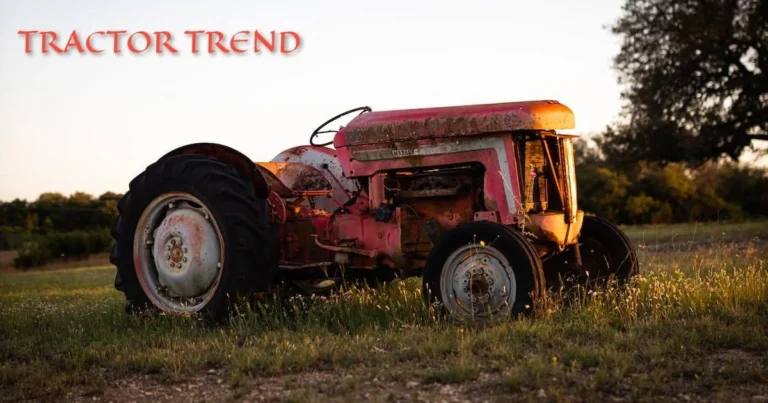Currently have the most Horsepower Tractors
The most powerful tractors today include the John Deere 9RX (670 HP), Case IH Steiger Quadtrac (620 HP), and New Holland T9 series (682 HP), engineered for unparalleled farm performance.
Introduction
In the ever-evolving world of agriculture, power is paramount. As farms grow larger and the demand for efficient, high-yield operations increases, the need for tractors with exceptional horsepower has never been greater. This comprehensive guide delves into the realm of the most powerful tractors currently available on the market, exploring their capabilities, technologies, and the impact they’re having on modern farming practices.
From the vast plains of North America to the sprawling fields of Europe and beyond, high-horsepower tractors are revolutionizing agricultural operations. These mechanical marvels are not just about raw power; they represent the pinnacle of agricultural engineering, incorporating cutting-edge technology, ergonomic design, and fuel efficiency to meet the complex demands of 21st-century farming.
In this article, we’ll examine the top contenders in the high-horsepower tractor market, analyze the factors that contribute to their impressive power outputs, and discuss the practical applications of these machines in various agricultural settings. Whether you’re a farmer looking to upgrade your equipment, an agricultural enthusiast, or simply curious about the latest advancements in farm machinery, this guide will provide you with valuable insights into the world of high-horsepower tractors.

John Deere 9R Series
John Deere, a name synonymous with quality agricultural machinery, leads the pack with its impressive 9R Series tractors. The flagship model, the 9R 640, boasts an astounding 640 horsepower, making it one of the most powerful tractors currently available on the market.
Key Features:
- Engine: John Deere PowerTech™ 13.6L
- Transmission: e18™ PowerShift™ transmission
- Hydraulic System: Up to 115 GPM (435 L/min)
- Integrated Intelligence: JDLink™ connectivity
The 9R Series is designed for large-scale farming operations, offering unparalleled power for heavy tillage, planting, and land-forming applications. Its advanced technology integration allows for precision farming practices, optimizing fuel efficiency and productivity.
Case IH Steiger Series
Case IH’s Steiger Series, particularly the Steiger 620 model, stands as a formidable competitor in the high-horsepower tractor market. With a maximum power output of 620 horsepower, it’s designed to handle the most demanding agricultural tasks with ease.
Key Features:
- Engine: FPT Cursor 13 engine
- Transmission: 16-speed PowerDrive powershift
- Hydraulic System: Up to 113 GPM (428 L/min)
- Technology: AFS Connect™ precision farming system
The Steiger Series is renowned for its fuel efficiency and low operating costs, making it an attractive option for large-scale farmers looking to maximize their return on investment.

New Holland T9 Series
New Holland’s T9 Series, with its top-of-the-line T9.700 model, delivers an impressive 700 horsepower, securing its place among the most powerful tractors available today.
Key Features:
- Engine: FPT Cursor 13 engine
- Transmission: Ultra Command™ full powershift transmission
- Hydraulic System: Up to 115 GPM (435 L/min)
- Smart Technology: PLM Intelligence™
The T9 Series is designed for ultimate productivity, combining raw power with advanced technology to optimize performance in various agricultural applications.
Fendt 1100 Vario MT
Fendt, known for its innovative approach to tractor design, offers the 1100 Vario MT series, with the top model reaching 673 horsepower. This tracked tractor provides exceptional traction and minimal soil compaction.
Key Features:
- Engine: MAN 6-cylinder engine
- Transmission: Vario Drive continuously variable transmission
- Hydraulic System: Up to 116 GPM (440 L/min)
- Smart Farming: Fendt Connect telematics system
The 1100 Vario MT series stands out for its combination of power and precision, making it ideal for large-scale operations that require both strength and finesse.
Understanding Horsepower in Agricultural Machinery
What is Horsepower?
Horsepower, a unit of measurement for power, has its roots in the Industrial Revolution. Coined by James Watt in the late 18th century, one horsepower was originally defined as the power needed to lift 550 pounds one foot in one second. In the context of modern tractors, horsepower refers to the engine’s ability to perform work over time.
Rated vs. Maximum Horsepower
When discussing tractor horsepower, it’s crucial to understand the difference between rated and maximum horsepower:
- Rated Horsepower: This is the power output that a tractor can sustain continuously under normal operating conditions.
- Maximum Horsepower: This refers to the peak power output that a tractor can achieve for short periods, often during high-demand situations.
Many manufacturers advertise maximum horsepower figures, but it’s important to consider the rated horsepower for long-term performance assessment.
Factors Influencing Tractor Horsepower
Several factors contribute to a tractor’s horsepower output:
- Engine Size and Design: Larger engines with advanced designs typically produce more horsepower.
- Fuel Injection Systems: Modern direct injection systems can significantly boost power output.
- Turbocharging and Intercooling: These technologies increase engine efficiency and power.
- Electronic Engine Management: Sophisticated control systems optimize power delivery and fuel efficiency.
The Technology Behind High-Horsepower Tractors
Advanced Engine Technologies
Tier 4 Final Emissions Standards
Modern high-horsepower tractors must comply with stringent emissions regulations. Manufacturers have implemented various technologies to meet these standards while maintaining or increasing power output:
- Selective Catalytic Reduction (SCR)
- Exhaust Gas Recirculation (EGR)
- Diesel Particulate Filters (DPF)
Variable Geometry Turbochargers
These advanced turbochargers adjust their geometry based on engine speed and load, providing optimal boost across a wide range of operating conditions.
Transmission Innovations
Continuously Variable Transmissions (CVT)
CVTs offer seamless power delivery and optimal fuel efficiency by continuously adjusting gear ratios to match operating conditions.
Power Shift Transmissions
Advanced powershift transmissions provide smooth gear changes under load, maximizing power transfer to the ground.
Precision Agriculture Integration
GPS Guidance Systems
High-horsepower tractors often come equipped with advanced GPS systems, enabling:
- Precise field navigation
- Automatic steering
- Optimal path planning for efficiency
Telematics and Data Management
Modern tractors are equipped with sophisticated telematics systems that allow for:
- Real-time performance monitoring
- Remote diagnostics
- Data-driven decision making
Hydraulic Systems
High-capacity hydraulic systems are crucial for powering large implements. Today’s high-horsepower tractors feature:
- High-flow pumps (100+ GPM)
- Multiple hydraulic remotes
- Advanced flow control and prioritization
Applications of High-Horsepower Tractors
Large-Scale Tillage Operations
High-horsepower tractors excel in heavy tillage work, capable of pulling wide implements at higher speeds, significantly increasing productivity.
Tillage Implements for High-Horsepower Tractors:
| Implement Type | Width Range | Typical Horsepower Requirement |
|---|---|---|
| Chisel Plow | 40-60 ft | 400-600 HP |
| Disk Harrow | 35-50 ft | 350-550 HP |
| Field Cultivator | 50-70 ft | 450-650 HP |
Planting and Seeding
Large planters and air seeders require substantial power for operation, especially when combined with tillage equipment for one-pass planting systems.
Heavy Hauling and Material Handling
High-horsepower tractors are often used for:
- Grain cart operations during harvest
- Manure spreading
- Silage packing
Land Forming and Earthmoving
With their immense power and traction, these tractors are ideal for:
- Terrace construction
- Drainage work
- Land leveling
Economic Considerations of High-Horsepower Tractors
Initial Investment
High-horsepower tractors represent a significant capital investment, often ranging from $300,000 to over $500,000 depending on specifications and features.
Operating Costs
While powerful, these machines can be expensive to operate. Key cost factors include:
- Fuel consumption
- Maintenance requirements
- Tire wear (especially for wheeled models)
Return on Investment (ROI)
To justify the investment, farmers must consider:
- Increased productivity
- Labor savings
- Timeliness of operations
ROI Calculation Example:
| Factor | Without High-HP Tractor | With High-HP Tractor |
|---|---|---|
| Acres Covered per Day | 200 | 350 |
| Labor Hours per Day | 16 | 12 |
| Fuel Consumption (gal/day) | 150 | 200 |
| Days to Complete 5000 Acres | 25 | 14 |
| Total Labor Cost | $4,000 | $2,688 |
| Total Fuel Cost | $11,250 | $8,400 |
In this example, the high-horsepower tractor completes the job faster, with significant savings in labor and overall fuel costs despite higher daily consumption.
Environmental Impact and Sustainability
Fuel Efficiency Advancements
Modern high-horsepower tractors incorporate various technologies to improve fuel efficiency:
- Engine start-stop systems
- Optimized power management
- Eco modes for light-duty operations
Soil Compaction Mitigation
The weight of high-horsepower tractors can lead to soil compaction. Manufacturers address this through:
- Track systems for better weight distribution
- Tire inflation management systems
- Articulated designs for improved maneuverability
Precision Agriculture and Resource Management
High-horsepower tractors equipped with precision agriculture technology contribute to sustainability by:
- Reducing chemical and fertilizer waste through precise application
- Minimizing fuel consumption with optimized field operations
- Decreasing seed waste with accurate planting systems
The Future of High-Horsepower Tractors
Autonomous Operations
The integration of artificial intelligence and advanced sensors is paving the way for autonomous high-horsepower tractors, which could revolutionize farming operations.
Alternative Power Sources
Research is ongoing into alternative power sources for high-horsepower tractors, including:
- Hydrogen fuel cells
- Biogas engines
- Electric-hybrid systems
Enhanced Connectivity and Data Utilization
Future tractors will likely feature:
- 5G connectivity for real-time data transfer
- Advanced analytics for predictive maintenance
- Integration with farm-wide management systems
Advancements in High-Horsepower Tractor Design
As the demand for more powerful and efficient agricultural machinery continues to grow, manufacturers are pushing the boundaries of tractor design. This section explores some of the cutting-edge advancements that are shaping the future of high-horsepower tractors.

Modular Power Systems
Concept and Benefits
Modular power systems represent a revolutionary approach to tractor design. Instead of relying on a single, massive engine, these systems use multiple smaller engines that can work in tandem or independently, depending on the power requirements of the task at hand.
Benefits include:
- Improved fuel efficiency
- Enhanced reliability through redundancy
- Flexibility to match power output to specific tasks
Implementation Challenges
While promising, modular power systems face several challenges:
- Complex integration of multiple engines
- Increased maintenance requirements
- Higher initial manufacturing costs
Advanced Materials in Tractor Construction
The use of advanced materials is playing a crucial role in improving the performance and efficiency of high-horsepower tractors.
Lightweight Alloys
Manufacturers are increasingly using lightweight alloys, such as high-strength aluminum and magnesium alloys, in tractor construction. These materials offer:
- Reduced overall weight
- Improved power-to-weight ratio
- Enhanced fuel efficiency
Composite Materials
Composite materials, including carbon fiber reinforced polymers, are finding their way into non-structural components of tractors. Benefits include:
- Further weight reduction
- Improved durability
- Better resistance to corrosion
Electrification and Hybrid Systems
While fully electric high-horsepower tractors are still in the experimental stage, hybrid systems are becoming increasingly viable.
Diesel-Electric Hybrids
These systems combine a diesel engine with electric motors, offering:
- Improved torque delivery
- Reduced fuel consumption
- Lower emissions
Challenges in Electrification
The main hurdles in developing fully electric high-horsepower tractors include:
- Battery capacity and charging infrastructure
- Power density requirements for heavy-duty applications
- High initial costs

Global Market Trends in High-Horsepower Tractors
Understanding the global market for high-horsepower tractors provides valuable insights into their adoption and future development.
Regional Demand Variations
The demand for high-horsepower tractors varies significantly across different regions:
| Region | Market Demand | Key Drivers |
|---|---|---|
| North America | High | Large farm sizes, precision agriculture adoption |
| Europe | Moderate | Strict emission regulations, focus on efficiency |
| Asia-Pacific | Growing | Increasing farm mechanization, government subsidies |
| South America | High | Expansion of large-scale farming operations |
Market Share of Major Manufacturers
The high-horsepower tractor market is dominated by a few key players:
- John Deere
- Case IH
- New Holland
- AGCO (Fendt, Massey Ferguson)
- Claas
These manufacturers continuously compete to offer the most powerful and technologically advanced tractors, driving innovation in the industry.
Emerging Markets and Growth Opportunities
Several emerging markets present significant growth opportunities for high-horsepower tractors:
Eastern Europe
- Consolidation of small farms into larger operations
- Increasing adoption of modern agricultural practices
India
- Growing mechanization of agriculture
- Government initiatives to boost agricultural productivity
Sub-Saharan Africa
- Expansion of commercial farming
- Increasing foreign investment in agriculture
Training and Skill Development for High-Horsepower Tractor Operation
The increasing complexity of high-horsepower tractors necessitates specialized training for operators and maintenance personnel.
Operator Training Programs
Simulator-Based Training
Many manufacturers and agricultural schools now offer simulator-based training programs. These provide:
- Safe environment for learning complex operations
- Scenario-based training for various field conditions
- Cost-effective way to gain experience
Hands-On Field Training
Practical, hands-on training remains crucial. Key aspects include:
- Understanding of advanced control systems
- Efficient operation of integrated precision farming technologies
- Safety protocols specific to high-horsepower machinery
Maintenance and Service Training
As tractors become more technologically advanced, maintenance and service personnel require specialized training.
Diagnostic and Repair Skills
Modern high-horsepower tractors require technicians skilled in:
- Advanced electronic diagnostics
- Hydraulic system maintenance
- Emission control system service
Continuous Learning Programs
Many manufacturers offer continuous learning programs to keep technicians updated on the latest technologies and repair techniques.
The Role of High-Horsepower Tractors in Sustainable Agriculture
While high-horsepower tractors are often associated with large-scale, intensive farming, they can play a significant role in promoting sustainable agricultural practices.
Precision Agriculture and Resource Optimization
High-horsepower tractors equipped with advanced precision agriculture systems contribute to sustainability by:
- Reducing input waste through variable rate application
- Minimizing soil compaction with controlled traffic farming
- Optimizing fuel use through efficient route planning and operation
Conservation Tillage Practices
Many high-horsepower tractors are designed to work effectively with conservation tillage implements, which help to:
- Reduce soil erosion
- Improve soil health and structure
- Decrease fuel consumption and emissions
Integration with Renewable Energy Systems
Some forward-thinking farms are exploring ways to integrate high-horsepower tractors with renewable energy systems:
- Using biogas produced on-farm to power tractors
- Incorporating solar charging stations for hybrid or electric models
- Utilizing wind energy for power generation to offset tractor energy use
Regulatory Environment and Compliance
The development and operation of high-horsepower tractors are significantly influenced by regulatory requirements, particularly regarding emissions and safety.
Emissions Standards
Tier 4 Final and Stage V
Current high-horsepower tractors must meet stringent emissions standards:
- Tier 4 Final in North America
- Stage V in Europe
These regulations have driven innovations in engine design and after-treatment systems.
Future Emissions Targets
Upcoming regulations are likely to focus on:
- Further reductions in NOx and particulate matter
- Potential regulation of CO2 emissions
- Incentives for alternative fuel use
Safety Regulations
Safety is a critical concern for high-horsepower tractor design and operation. Key regulatory areas include:
- Rollover protection systems (ROPS)
- Operator visibility standards
- Noise level limitations
- Emergency stop systems
Compliance Challenges
Manufacturers face several challenges in meeting regulatory requirements:
- Balancing emissions compliance with performance
- Managing the cost impact of advanced technologies
- Adapting designs for different global markets with varying regulations
The Impact of High-Horsepower Tractors on Farm Economics
The decision to invest in a high-horsepower tractor can have significant economic implications for a farming operation.
Total Cost of Ownership Analysis
When considering a high-horsepower tractor, farmers must evaluate the total cost of ownership, including:
- Initial purchase price
- Fuel and maintenance costs
- Depreciation
- Productivity gains
Sample TCO Calculation
| Cost Factor | 400 HP Tractor | 600 HP Tractor |
|---|---|---|
| Purchase Price | $300,000 | $450,000 |
| Annual Fuel Cost | $30,000 | $40,000 |
| Annual Maintenance | $15,000 | $20,000 |
| Annual Depreciation | $30,000 | $45,000 |
| Productivity Gain | Base | +20% |
| 5-Year TCO | $675,000 | $975,000 |
Economies of Scale
High-horsepower tractors often become more economically viable as farm size increases:
- Fixed costs are spread over more acres
- Efficiency gains have a larger absolute impact
- Labor costs per acre typically decrease
Financing and Leasing Options
To make high-horsepower tractors more accessible, manufacturers and financial institutions offer various options:
- Low-interest financing programs
- Flexible leasing arrangements
- Power-by-the-hour contracts for seasonal use
Case Studies: High-Horsepower Tractors in Action
Examining real-world applications provides valuable insights into the practical benefits and challenges of using high-horsepower tractors.
Case Study 1: Large-Scale Wheat Farm in Kansas, USA
A 10,000-acre wheat farm in Kansas upgraded from 400 HP to 600 HP tractors.
Results:
- 25% reduction in time required for spring tillage
- 15% decrease in fuel consumption per acre
- Ability to use larger implements, reducing the number of passes
Challenges:
- Initial investment required financial restructuring
- Operators needed additional training to maximize efficiency
Case Study 2: Sugar Cane Plantation in Brazil
A sugar cane operation in Brazil adopted 700 HP tractors for heavy hauling during harvest.
Results:
- 40% increase in daily tonnage transported
- Reduced reliance on truck transportation, cutting costs
- Improved timeliness of harvest operations
Challenges:
- Soil compaction concerns required investment in flotation tires
- Higher maintenance costs due to intense usage
Case Study 3: Mixed Farming Operation in Germany
A 2,000-hectare mixed farm in Germany invested in a 500 HP tractor with advanced precision farming capabilities.
Results:
- 10% reduction in input costs through precise application
- Improved data collection and analysis for decision-making
- Enhanced ability to meet strict EU environmental regulations
Challenges:
- High initial learning curve for precision farming systems
- Needed to upgrade other equipment to fully utilize tractor capabilities
Conclusion
The world of high-horsepower tractors represents the pinnacle of agricultural engineering, where raw power meets sophisticated technology. These machines are transforming modern farming, enabling operations of unprecedented scale and efficiency. From the 640-horsepower John Deere 9R to the tracked precision of the Fendt 1100 Vario MT, today’s most powerful tractors are marvels of innovation.
As we’ve explored, these tractors are not just about brute force. They embody a holistic approach to agriculture, integrating advanced engine technologies, smart transmission systems, precision agriculture capabilities, and environmentally conscious designs. The result is a new paradigm in farming – one where power, efficiency, and sustainability coexist.
The economic considerations of investing in a high-horsepower tractor are significant, but for large-scale operations, the returns in terms of productivity and timeliness can be substantial. Moreover, as these machines continue to evolve, incorporating autonomous features and alternative power sources, they promise to play an even more crucial role in addressing global food security challenges.
As we look to the future, it’s clear that high-horsepower tractors will continue to push the boundaries of what’s possible in agriculture. They will be at the forefront of efforts to increase food production while minimizing environmental impact, embodying the spirit of innovation that drives the agricultural sector forward.
For farmers, agricultural professionals, and industry enthusiasts alike, staying informed about these technological marvels is not just interesting – it’s essential. As the demands on global agriculture grow, the tractors with the most horsepower today are shaping the farms of tomorrow, one powerful pass at a time.
FAQs
- Q: What is considered high horsepower for a tractor?
A: In today’s market, tractors with over 400 horsepower are generally considered high-horsepower models. The most powerful tractors currently available can reach up to 700 horsepower. - Q: Are high-horsepower tractors more fuel-efficient than smaller models?
A: While high-horsepower tractors consume more fuel overall, they can be more efficient in terms of fuel used per acre worked. This is due to their ability to cover more ground faster and pull larger implements, potentially reducing the number of passes required. - Q: Can high-horsepower tractors be used for smaller farming operations?
A: While high-horsepower tractors are designed primarily for large-scale operations, they can be used on smaller farms. However, the high initial cost and potentially underutilized capacity might not make them economically viable for smaller operations. - Q: How do tracked high-horsepower tractors compare to wheeled models?
A: Tracked tractors generally offer better traction and lower ground pressure, which can be beneficial for soil health. Wheeled tractors, on the other hand, often provide higher road speeds and may be more versatile across different terrains. - Q: What maintenance considerations are there for high-horsepower tractors?
A: High-horsepower tractors require regular, specialized maintenance due to their complex systems. This includes routine engine service, transmission checks, and calibration of electronic systems. It’s crucial to follow manufacturer guidelines and potentially invest in specialized training for operators and mechanics.






